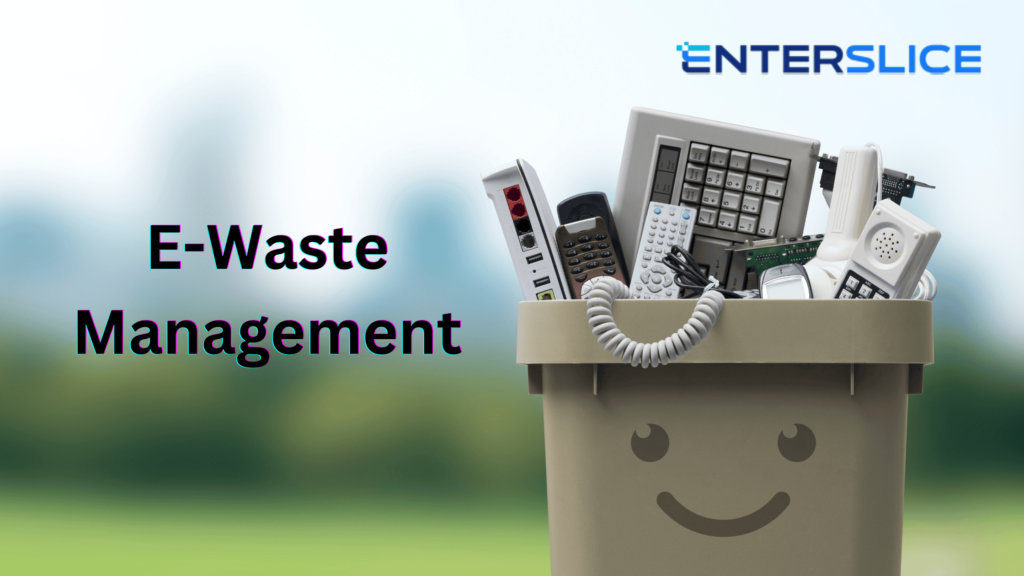In today’s digital age, electronic devices have become a fundamental part of our lives. However, the rapid growth of technology has also led to a significant increase in electronic waste, or e-waste. E-waste consists of discarded electrical and electronic devices such as computers, mobile phones, and televisions. Improper disposal of e-waste can harm both the environment and public health. This blog will discuss the best practices for e-waste management, and highlighting the importance of e-waste recycling authorization.
Understanding E-Waste
E-waste refers to any electronic product that is no longer wanted, not working, or obsolete. Common examples include:
- Computers and laptops: Old devices that are no longer used.
- Mobile phones: Outdated or broken phones.
- Televisions: Old CRT and flat-screen models that are no longer functional.
- Home appliances: Refrigerators, washing machines, and microwaves that are damaged or no longer needed.
E-waste can contain harmful materials like lead, mercury, and cadmium. If not disposed of properly, these materials can leach into the soil and water, posing significant health risks to humans and wildlife. Therefore, managing e-waste effectively is crucial for protecting our environment.
Best Practices for E-Waste Management
1. Educate Yourself and Others
The first step in managing e-waste is education. Understanding the implications of e-waste and the significance of proper disposal can motivate individuals and businesses to act responsibly. Share information about e-waste management with family, friends, and colleagues. Organizing workshops or seminars can help raise awareness about how to handle e-waste effectively.
2. Assess E-Waste in Your Organization
For businesses, conducting an assessment of e-waste generated is essential. This involves evaluating the types and quantities of electronic devices being discarded. By understanding the specific e-waste generated, organizations can develop a tailored plan for e-waste management. This may include repairing, refurbishing, or recycling devices to minimize waste and recover valuable materials.
3. Reuse Electronics Whenever Possible
Before disposing of electronic devices, consider reusing them. Many electronic items can be refurbished or repaired to extend their life. For instance, old computers can often be upgraded with new components. Donating functional devices to schools, charities, or community organizations is another excellent way to give them a second chance.
4. Recycle Responsibly
Recycling e-waste is one of the best ways to manage it responsibly. However, it’s crucial to ensure that recycling is done through authorized channels. In India, e-waste recycling authorization is required for companies and organizations that handle e-waste. This authorization ensures that e-waste is processed safely and sustainably. Look for certified e-waste recycling centers that adhere to proper recycling practices.
5. Follow Government Regulations
The Indian government has established regulations for e-waste management to protect public health and the environment. Familiarize yourself with these regulations and ensure that your e-waste disposal practices comply with the law. Businesses must register with the Central Pollution Control Board (CPCB) for proper e-waste management. Adhering to these regulations helps ensure responsible disposal and avoids legal penalties.
6. Implement a Take-Back Program
Businesses can establish take-back programs that allow customers to return old electronics for safe disposal or recycling. This not only promotes responsible e-waste management but also encourages customers to choose your brand, knowing you care for the environment. Offering incentives, such as discounts on new products for returning old ones, can create a win-win situation.
7. Work with Authorized E-Waste Recyclers
When it comes to disposing of e-waste, working with authorized recyclers is vital. These professionals are trained to handle hazardous materials safely and ensure that e-waste is recycled properly. Research local recycling facilities and verify their certifications before partnering with them. A trustworthy recycler will provide documentation, ensuring compliance with regulations and promoting sustainability.
8. Monitor E-Waste Disposal
For businesses, it’s important to track how e-waste is disposed of. Keep records of e-waste collected, recycled, or disposed of, including details of the recycling companies used. This documentation can help ensure that e-waste is managed properly and can serve as evidence for regulatory compliance.
9. Participate in E-Waste Collection Drives
Many organizations and municipalities hold e-waste collection drives. Participating in these events can help you dispose of your old electronics responsibly. Check for local initiatives or community programs that organize e-waste collection and recycling.
10. Advocate for Sustainable Practices
Finally, advocate for sustainable practices within your community or workplace. Promote the importance of e-waste management through campaigns or events that encourage others to join the cause. By working together, we can create a healthier environment and a sustainable future.
Conclusion
E-waste management is crucial in today’s electronic age, and following these best practices can significantly reduce environmental impact. Educating yourself and others, assessing e-waste, reusing and recycling responsibly, and adhering to regulations are all vital steps in this process. By implementing these practices, individuals and businesses can contribute to a healthier environment and a sustainable future.



More Stories
Tax Benefits of Using Virtual Offices
What Are Industrial Cable Glands and How Do They Work?
Benefits of Reviewing PTE Mock Test Results